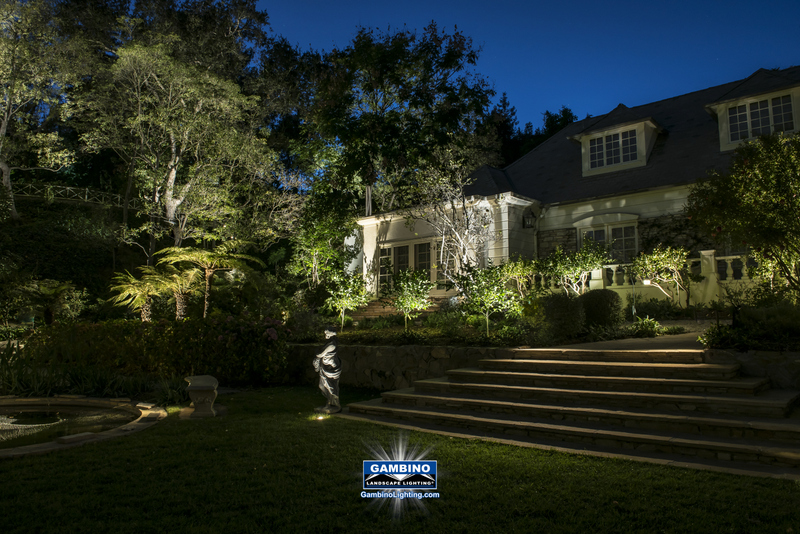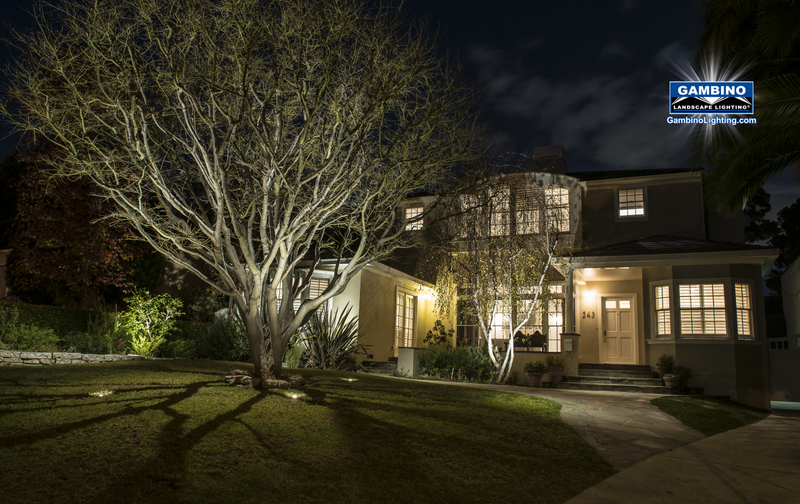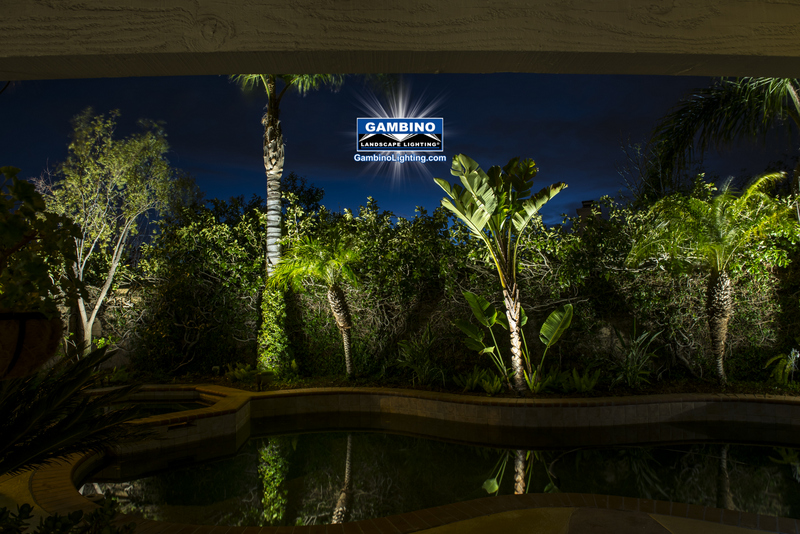03 Apr Principles To Building A Successful Landscape Lighting Business in any Economic Condition
By Mike Gambino
What has inspired this blog article is the recent global turn of events that has brought a thriving economy to a very uncertain one going forward. It is aimed at and for the benefit of fellow trade professionals. Recently I’ve been reading some misguided statements on the internet from fellow trade pro’s. One guy was considering a “promotion” with a set number of fixtures for a covid-19 discounted fixed price which seemed to make him look desperate for work even if unprofitable . Another was advising the consumer on his blog not to spend more than they felt like spending. The truth is that most all consumers have no idea what a professional design build costs so often times it will cost more than they feel like spending but isn’t that true of most major purchases like most other home improvement projects? Why not just present your best regardless of cost and let the prospect decide if this is something that will work for them and their budget or not and then adjust from there.
 My advice is for fellow trade pro’s to take a deep breath this too shall pass. My goal is to bring some clarity by going back to the basics that work even during these challenging times.
My advice is for fellow trade pro’s to take a deep breath this too shall pass. My goal is to bring some clarity by going back to the basics that work even during these challenging times.
If landscape lighting is your profession, your business and not your hobby, then this blog article is written for your benefit. The key word here is Business and it should be operated as such. I’m not going to cover the obvious basics like return phone calls in a timely fashion, be reliable, responsible etc. Those should be a given if you’ve been in business for awhile.
Outdoor living areas benefit greatly with the addition of high quality outdoor lighting to the garden and landscape. While this is a niche market, it can be a highly profitable one if properly executed or it can put you out of business quickly if it’s not. There are a few key principles to follow to insure your continued success. These six principles are:
- Follow a systematic and duplicable process
Roy Kroc built the empire known as McDonalds using this simple but effect technique. Contrary to the belief that some may have that this type of building thwarts creativity it actually has the opposite effect. When you build your landscape lighting projects using a that can be replicated on jobsite after jobsite, using the same installation process, it takes the mystery out of the process and lets you teach and train crew members on the steps and procedures. This is important so you can run your business, find more jobs, and focus on growing your customer base.
- K.I.S.S. (keep it simple stupid)
Building landscape lighting systems isn’t rocket science. There’s really no reason to overcomplicate the process. However it does require a great deal of study, experience and experimentation before you get it right. My recommendation is that this discovery and experimentation should never be done at a paying client’s home and at their expense. This practice should be accomplished at a “safe house” somewhere preferably on your own property or one of a friend or family member. This should not only be your training grounds but also your subject for ongoing research and development where new techniques and products can be tested for reliability over time before introducing them into a client’s yard.
- Work with the landscape and architecture, not against it
As a professional, it’s your job to let your customer know what will work and fit with their landscape plans and property. Every property has features that scream for attention and other areas that should be downplayed and left in shadow. Sometimes clients can have some unrealistic wishes. This brings us to the next point.

- Give your clients what they want, not always what they ask for
We’ve all had the customer that feels they can tell you how to accent the features in their design with light. Sometimes they are correct but often times not. This is what you get paid for, to give your best advice. If you’ve listened to their expectations of what they are seeking to achieve, you should get a good picture of the finished product you can provide. Your goal is to give them their desired end result. Sometimes how you get there might be different than what the customer had in mind. There is a good chance that the last time they illuminated a property was never. You’re the one that has solved the same problem for previous customers. Clarify their desires, ask the right questions, then show them the solutions you’re going to provide and then provide them.
- No free Consulting
It’s often challenging with a design/build project (but not impossible) to provide a price range for your customer over the phone for a typical landscape lighting system. There are just so many factors to consider and quoting monetary figures sight unseen can only lead to misunderstandings and problems. So my recommendation in the past has been to never do it. However there are alternatives so keep on reading. It may be that the customer is looking for a free design, drawing or spec sheet do not become a victim. As a professional, you should respect your time and trade, and insist on working with customers that feel the same. Every job you do is unique and your time is valuable. When you do a design consultation whether on site or over the phone/text e-mail, you’re providing value for that client. There is one thing design builders should never do; this important issue can single handedly destroy this industry. If prospects do not want to meet with you personally, what has worked for us is having them fill out a questionnaire so we can understand their lifestyle, wants and needs, send photos of their property with descriptions as to what they are wanting to achieve and viewing positions. Based upon this information and technology like views of their property on google earth we are able to come up with a fixture and equipment count and project cost. I am pleased to report that we have successfully closed many projects before ever physically meeting a client or their property. They were able to trust us due to our reputation and online reviews.
- Sell on value not on price
Never underbid or low ball a job just to get that job. Remember, underbidding a project may get you the job but cost you in the end. Every time design builders underbid a project, they hurt themselves, their business and the industry as a whole.
By pricing your projects fairly and competitively without gouging your customers, you can be successful without having to undercut your competitors. By offering higher quality materials and components, better service and attention to detail you’ll be able to meet the demands and wishes of your client.
Not all prospects are going to be able to afford or will desire to pay what it costs for your lighting systems. Some legitimately cannot afford it. Hopefully this was determined by qualifying them before spending time and effort putting together a design and proposal for them. Others will be able to afford your offering but will want to hammer you down to a price where they feel you will not make a profit on the project. Do not fall for the sob stories of an uncertain economy, empty promises made that “you will get many jobs from this one if you do it for this price”. Most times you will not and if you do who would want another project like that because you’d be expected to match that same low price again. This type of practice will put you out of business in no time flat. If the prospect wants to negotiate a lower price then make them understand that they will have to make concessions that may negatively impact the successful outcome of the project. If they insist then deduct amenities (as long as it will not totally destroy the project) and explain the impact until the price is right and the prospect buys. Hopefully you’ve done such a good job showing value earlier on in your marketing and presentation so this is not necessary.
 Never presume to know what your prospect is willing to invest in your lighting system. Do not impose your own predisposed values or what you think they want, let them tell you with their words and actions. Unlike the blogger previously mentioned at the start of this article who presumes to know the maximum dollar value his prospects are willing to invest. Do not set arbitrary limits and sell them a $20 pair of shoes when a $2,000 pair is what they want.
Never presume to know what your prospect is willing to invest in your lighting system. Do not impose your own predisposed values or what you think they want, let them tell you with their words and actions. Unlike the blogger previously mentioned at the start of this article who presumes to know the maximum dollar value his prospects are willing to invest. Do not set arbitrary limits and sell them a $20 pair of shoes when a $2,000 pair is what they want.
If at any time during your meeting you feel you are not compatible with the prospect or their project and feel you cannot suite their needs then respectfully pull the plug. It’s better to walk from a situation before things go bad during the build. After you’ve been doing this for awhile you begin to build a sixth sense which will guide you in making these decisions with confidence.
Of course your success will depend on many other factors including providing a quality service and securing customer referrals. Let us know if you agree or take a different philosophy in running your business from what we’ve covered here. We’d like to hear your comments.
 This landscape lighting blog is published by Mike Gambino of Gambino landscape lighting inc. all rights reserved. Mike is
This landscape lighting blog is published by Mike Gambino of Gambino landscape lighting inc. all rights reserved. Mike is  a professional landscape lighting system designer/ builder and has been designing, installing and maintaining landscape lighting systems for more than 30 years. Mike resides in the Los Angeles area with his wife and 2 sons. To visit his website go to www.Gambinolighting.com . To inquire about hiring Mike please click here .
a professional landscape lighting system designer/ builder and has been designing, installing and maintaining landscape lighting systems for more than 30 years. Mike resides in the Los Angeles area with his wife and 2 sons. To visit his website go to www.Gambinolighting.com . To inquire about hiring Mike please click here .
Blog articles may be published with permission on other websites without editing or removing links.



No Comments